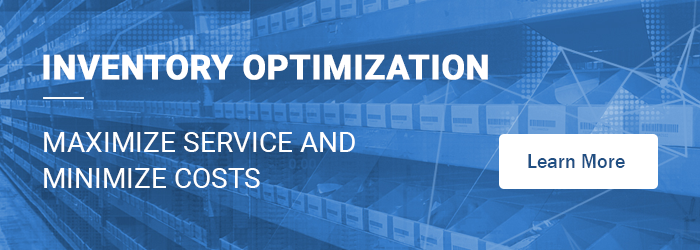Businesses relying on spreadsheets for demand planning, forecasting, and inventory management often find themselves hamstrung by the inherent limitations of these tools. This post explores the pitfalls of conventional inventory management practices driven by spreadsheets and the associated costs, contrasting them with the significant advantages gained by adopting modern planning technologies. While spreadsheets offer flexibility through endless customization options, they remain fundamentally manual in nature. This requires extensive data management, human intervention, and constant oversight. Consequently, the risk of errors—ranging from simple data entry mistakes to complex formula issues—increases significantly. These errors can cascade, negatively impacting forecasts and decision-making processes. Furthermore, even though recent advancements in collaborative features allow multiple users to access and edit a shared spreadsheet, the overall process remains siloed. Whoever controls the spreadsheet controls the data, leading to fragmented truths and inconsistencies. Without a single, trusted, and automatically updated source of data, organizations lack the foundation needed to build reliable predictive models, forecasts, and analytics. In contrast, advanced planning systems like Smart IP&O are specifically designed to address these limitations. These systems are equipped to automatically import data from ERP and EAM systems via APIs or file transfers, transform the data using built-in ETL tools, and efficiently process large datasets. This automation enables businesses to handle complex inventory and forecasting tasks with greater precision and reduced manual effort. Data collection, aggregation, and transformation are streamlined, leaving employees free to focus on higher-value activities. Spreadsheets also present a scalability challenge. As a business grows, the number of spreadsheets, workbooks, and formulas proliferates, creating an intricate web of dependencies that becomes increasingly difficult to manage. Users face sluggish processing speeds, an inability to handle large datasets, and collaboration difficulties across teams and departments. In contrast, advanced planning systems for inventory optimization, demand planning, and inventory management are scalable and adaptable, growing alongside the business and adjusting to its evolving needs. By transitioning to systems like Smart IP&O, companies can enhance inventory management and forecasting accuracy while gaining a competitive edge through faster responsiveness to demand changes and improved operational efficiency. Real-World Benefits: Consider an electric utility company managing over 250,000 part numbers across a vast network of power generation and distribution facilities. Struggling to maintain service part availability without overstocking, they replaced their two-decade-old legacy planning process (heavily reliant on spreadsheets) with Smart IP&O and real-time integration to their EAM system. Previously, they could only adjust Min/Max and Safety Stock levels sporadically, usually after encountering problems. Their methods relied heavily on intuition and historical averages. Using Smart’s what-if scenarios, the utility created digital twins of alternative stocking policies and simulated their performance based on key metrics like inventory value, service levels, fill rates, and shortage costs. The software identified precise Min/Max adjustments, which were implemented in their EAM system, ensuring optimal replenishment of spare parts. The outcome? A $9 million inventory reduction that freed up cash and valuable warehouse space while maintaining 99%+ service levels. Improved Forecast Accuracy: Forecast errors are inevitable in inventory management, yet many businesses fail to track them. As Peter Drucker once said, "You can't improve what you don't measure." A global high-tech manufacturer using a spreadsheet-based forecast process had to manually create baseline forecasts and report forecast accuracy. Due to the planners' heavy workload and siloed processes, updates were infrequent, and results required manual distribution. The company lacked insight into the accuracy of specific forecasts and couldn’t confidently assess errors by part group. They also couldn’t compare their forecasts to a control method. After implementing Smart IP&O, the Demand Planning module automated this process. Smart Demand Planner now automatically recalculates demand forecasts during each planning cycle using machine learning methods and generates detailed accuracy reports for every part-location combination. Overrides applied to forecasts can now be compared to the baseline to evaluate forecast value-add—whether the extra effort improved accuracy. With automated baseline forecasting and accuracy reporting in place, the company has a solid foundation to refine its forecasting process and boost accuracy. Consistency and Reliability: Another client in the aftermarket parts industry has been using Smart’s forecasting solutions since 2005—nearly two decades! They struggled with forecasting intermittent demand for parts supporting their auto aftermarket business. By replacing their spreadsheet-based approach and manual uploads to SAP with statistical demand forecasts and safety stock calculations from SmartForecasts, they reduced backorders and lost sales significantly. Fill rates improved from 93% to 96% within three months. Success hinged on leveraging Smart’s patented method for forecasting intermittent demand—the "Smart-Willemain" bootstrap method provided accurate estimates of cumulative demand over the lead time, enhancing visibility into potential demands. Connecting Forecasts to Inventory Plans: Advanced planning systems support forecast-driven inventory management, taking a proactive approach based on demand forecasts and simulations. This data informs optimal inventory levels. Probabilistic forecasting contrasts with the reactive nature of spreadsheet-based methods. A longstanding client in the fabric industry previously faced overstocks and stockouts due to intermittent demand for thousands of SKUs. They lacked visibility into stock-out risks and couldn’t proactively adjust policies beyond rough-cut assumptions that led to excessive overstocking. Adopting Smart Software’s demand and inventory planning tools allowed them to simulate demand and identify optimal Minimum On-Hand values and order quantities, ensuring immediate product availability while highlighting the advantages of a forecast-based approach. Enhanced Collaboration: Sharing forecasts with key suppliers strengthens supply chains. Kratos Space, part of Kratos Defense & Security Solutions, Inc., used Smart forecasts to provide contract manufacturers with better insights into future demand. This enabled the CMs to reduce material costs and lead times for engineered-to-order systems. Such collaboration showcases how advanced forecasting techniques foster supply chain efficiencies and cost savings for all parties involved. As businesses evolve, outdated tools like spreadsheets can hinder progress rather than facilitate it. Transitioning to advanced planning systems represents a strategic shift toward smarter, more agile operations. Embracing technology like Smart IP&O can transform inventory management and forecasting, unlocking new opportunities for growth and competitiveness. Thermo King Coil Condenser,original coil condensor,compatible with T600M T800M Chongqing Wishcarry Trade Co.,Ltd. , https://www.wishcarry-cooler.com
The Cost of Spreadsheet Planning
